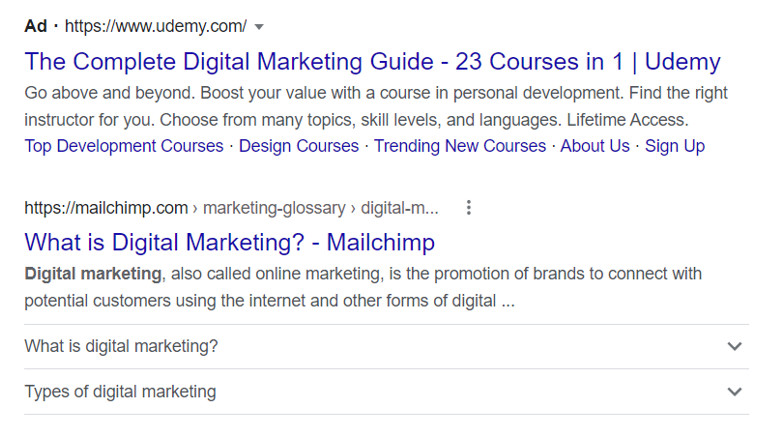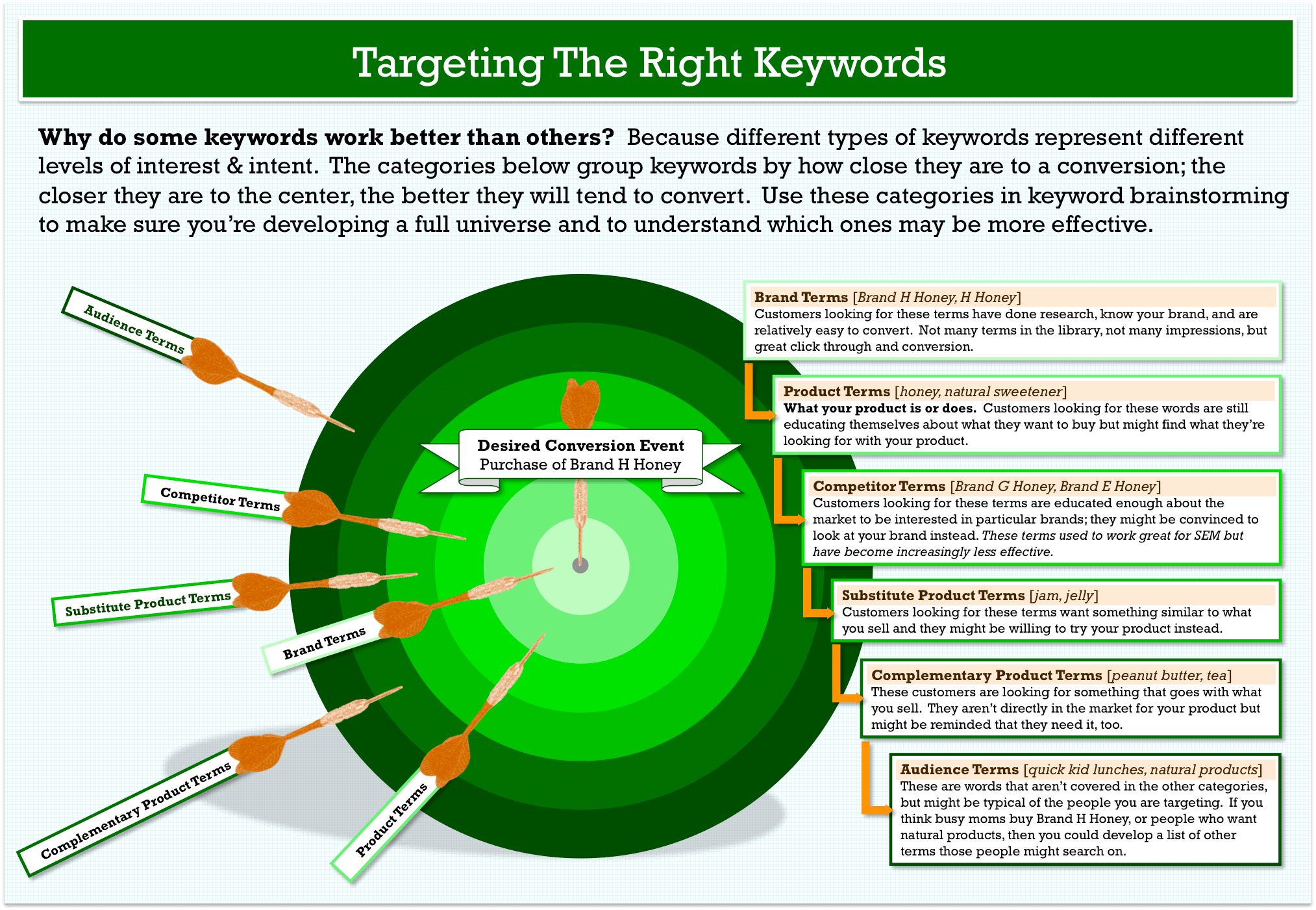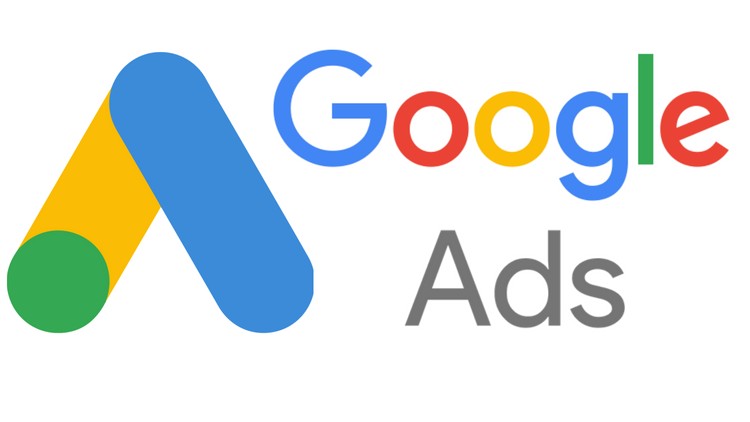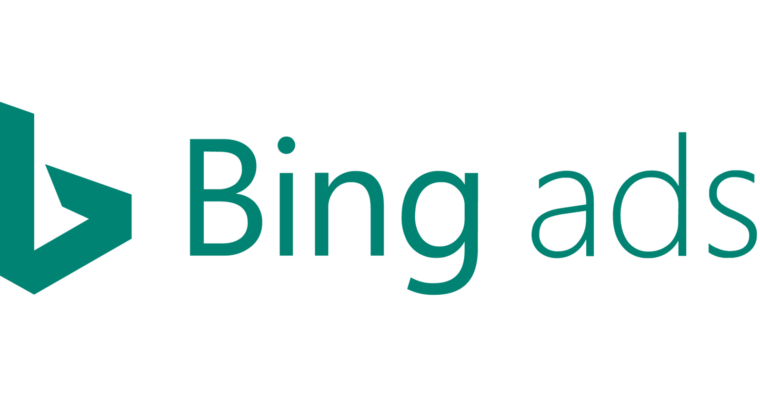Business success doesn’t happen overnight. It takes a solid strategy to grow your small business. Nowadays, digital marketing is something you really should explore to achieve your bottom line, and a channel that you may consider utilizing is Search Engine Marketing (SEM) or search advertising. This entails using paid ads or pay-per-click (PPC) ads to promote your brand or content to increase search engine visibility.
Paid search means “bidding” for a placement before the organic search results when users look up a keyword relevant to your business. Obviously, when your brand is at the top of Search Engine Results Pages (SERPs), you get better exposure and can pull in more prospects.
According to studies, SEM is a highly effective marketing channel because today’s consumers rely heavily on search engines when gathering information about a product or service.
Small and large corporations are on an even playing field when it comes to SEM, and it’s a matter of who has the better paid search strategy. Aside from increasing brand awareness, SEM can also help generate leads and increase revenue.
SEO vs. SEM for Small Businesses: How Do They Differ?
The clearest difference between small business SEM and search engine optimization (SEO) is that you’ll need to spend for your SEM efforts, while you won’t have to with SEO. You can tell whether a search result is part of an SEM strategy if it has the Ad” tag before the URL, indicating that it’s occupying a paid search engine ranking position.
Take the image below, for example. These are the results for the keyword “digital marketing.”

The result above has the tag “Ad,” which means it sits at a paid position, while the one below doesn’t, which means it organically ranked high.
Another difference is that while SEO strategy relies on using keywords intelligently to help you rank higher on SERPs, small business SEM strategy involves the additional process of bidding.
Through SEM, businesses bid for the top positions on SERPs like an auction. However, a higher bid isn’t always enough. You’ll also need to ensure that your site has a good quality score.
It’s possible for you to stick to a non-paid SEO strategy if you’re on a tight budget or still establishing your business. However, an SEM strategy could play a vital role in the growth of your brand eventually.
It’s easy to confuse small business SEM with SEO since both involve strategic marketing through search engines. However, understanding their differences is important to help you grow your small business effectively.
Also Read: Keyword Selection: SEM Guide for Research
Benefits of SEM for Small Businesses
Utilizing SEM offers multiple advantages, especially for small businesses. Here are some benefits of SEM for small businesses.
-
Competitive advantage
SMBs are at a disadvantage when it comes to competing with big brands. Usually, more established brands are the ones taking the top organic results for popular keywords, but with an excellent SEM strategy, SMBs can one-up their larger competitors.
Understandably, big brands can also afford paid ads, but if you have a smarter plan with more compelling copy, you can differentiate yourself and stand out from the crowd.
-
Instant awareness
One of the challenges of SMBs is that they have close to zero visibility. Not many consumers will be familiar with your brand, especially if you’re just starting out. However, if you continually show up on top of SERPs for your relevant keywords, you can foster instant brand awareness with otherwise unacquainted users.
-
Reinforces name recognition
It’s been said that it takes 7–13 touch points before a prospect converts. It’s safe to say that a customer would not readily purchase from you at the first moment they find you online. You need to reinforce recognition so that customers keep your brand top-of-mind once they’ve decided to push through with the purchase.
-
Reaches your prime target
Unlike traditional marketing that forces you to cast a wider net (not to mention, utilizing expensive practices), SEM allows you to concentrate on your primary targets. At this level, you can connect more meaningfully because the audience is already interested in you. You know precisely which personas will benefit from your product or service, and the right keyword targeting lets you speak directly to them.
-
Right place and time
More than half the world’s population uses the internet and over 93% of their online experiences start on a search engine. There’s no doubt that much your audience will stumble upon your brand through a search engine.
When you can deliver what users need during the search process, you build trust. Even if that click doesn’t immediately convert, this touch point will still help drive the purchasing journey forward.
-
Generates revenue quickly
As long as you have the right SEM plan (and the right copy) to convert your search engine visibility into paying customers, you can start working on your SEM. You can set up a search ad campaign and have it go live within minutes. A quicker ROI means faster growth and better scalability, which are sought after by most SMBs.
-
Grows with your business
SEM is scalable; it’s easy to start small and test things out to see what works. You don’t need a big budget right away. For SMBs, a small budget isn’t an issue. For example, you can run a Google Ad with as low as $10. Then you can opt to spend more as your revenue starts increasing.
-
No need to spend excessively
SEM is considered more affordable because you’re in control. Even with a small budget, you can still reach the right audience, and this is possible with strategic keyword bidding. As mentioned, you compete with other brands for a relevant keyword by placing a bid on it. In Google Ads, bids can be set manually or automatically.
How Small Businesses Can Leverage SEM
Because SEM can be set up quickly and with a minimal budget, it’s no surprise that SMBs stand to benefit significantly from implementing it. Here’s how you can start utilizing search engines to make your brand stand out from the competition, even if you’re contending with bigger, more established names.
-
Create goals for your SEM
Many things require you to plan ahead of time, and SEM is no different. There should be a clear path to make it easier for you to reach your goals. Your brand will gain more traction and rank better in SERPs when you make the most out of SEM. So, ask yourself a few questions to strengthen your plan:
-
What happens next after a user has clicked on your search ads?
-
Do you want people to download an app/ebook, subscribe to a newsletter, make a purchase, or do something else?
-
What is your ultimate goal for spending money on a PPC ad? Build awareness? Generate leads? Increase sales?
The next step is finding out who your competitors are and what kinds of strategies they’re executing. This will give you an idea of how your SEM strategy can fit into the existing landscape. Then, pick a search platform that best suits your brand’s goals. One way to ensure if it fits your budget is to run tests on different platforms to determine volume, traffic quality, and average CPC.
Once you’ve established an idea on how you will design your PPC ads, do some research on keywords you can use. Remember to test them first before using them.
Depending on your answer to the third question, don’t forget to select the right KPIs and metrics to measure your SEM campaigns, may it be Clicks, CTR, CPC, CPA, CVR, Average Position, Impression Share, Budget Attainment, or Lifetime Value.
-
Figure out your target audience
You can build better relationships with your audience once you know who you’re making the ads for, so proper audience research for search engine marketing in the Philippines is a must.
Look for what your audience likes and dislikes. Find out the challenges and pain points they’re going through and how you can solve them. For example, do they need more customer support, do they have children with special needs, etc. It could be anything—so try making personal profiles or buyer personas to help understand your audience.
Another critical factor you should consider is the location of your audience. It’s favorable for your consumers if they can easily access your products or services when it’s convenient for them. You should also consider other similar products or brands that may or may not be available in their location.
-
Do keyword research
Google gets up to 3.5 billion searches every day. For businesses, this means picking the right keywords to show up in relevant search results. Picking suitable keywords is essential because some keywords are more competitive than others. Go for those that have lower CPCs but still indicate buying intent. These three things are what you should do when looking for the perfect keyword:
-
Create a seed list of starting terms
-
Expand your list using keyword research tools
-
Refine your list with competitive research
A seed list is a compilation of main keywords related to your brand. Brainstorm relevant terms your audience uses and have a look at what your competition is doing. All of this can be done using SEM tools. Once you’ve created a seed list, categorize them by using the target model.

The target model comes in six categories and arranged based on the level of interest and intent that they target. The six categories are brand terms, product terms, competitor terms, substitute product terms, complimentary product terms, and audience terms. For best results, make sure you’ve included keywords that cover all 6 categories.
-
Localize SEM
SEM is especially useful for marketers who are on a restricted budget and want to make the most of every dollar spent. A way to make sure you’re spending your budget wisely while targeting the most suitable audience for your brand is to localize your website and SEM efforts.
Localizing SEM means making your online presence fit for use for locals. This includes giving a translation for your pages, adjusting the currency for payment options, and providing geographically specific information. You can even change the color scheme of the site to match regional preferences.
Another way to localize your website is to consider using a local domain, IP address, and hosting provider to speed up content delivery. More importantly, you should target area-specific keywords. Doing so will raise the chances of your site appearing on top of the page results for that country, region, or city, and even drive foot traffic and conversions in your physical store, if you have one.
-
Know which platforms to use
SEM is a great way to increase your brand awareness, sales, and online leads. So, make sure you understand which platform best fits your business. There are a variety of choices to optimize your strategy. You should, of course, know the differences between each SEM platform and how they can benefit your brand.
Each platform has its own characteristics. Once you’ve researched them, you can determine if they match your preferred ad format, SEM goals, and budget. Popular platforms include:
-
Google Ads (formerly AdWords)

Google Ads only requires a Google account and a minimum budget of $10/day. With Ads, you select the keywords to target, set your bidding strategy, and users will start to see your ads immediately. Note that in 2018, 61% of search clicks on Google were done through a smartphone, while 6% were on a tablet.
-
Bing Ads
 Bing Ads offers relatively cheaper CPCs and allows you to assign campaigns for different time zones, which is helpful if you want to reach international audiences. It also offers various options for budget setting, location targeting, and ad network distribution. In 2018, 25% of search clicks on Bing was from a phone, while 7% are on a tablet.
Bing Ads offers relatively cheaper CPCs and allows you to assign campaigns for different time zones, which is helpful if you want to reach international audiences. It also offers various options for budget setting, location targeting, and ad network distribution. In 2018, 25% of search clicks on Bing was from a phone, while 7% are on a tablet.
-
Yahoo! Gemini
 Yahoo is the only platform that allows both search and native advertising. It also allows content recommendation boxes on their article pages and stream ads. In 2018, 22% of search clicks on Yahoo was from phones, while 11% are on a tablet.
Yahoo is the only platform that allows both search and native advertising. It also allows content recommendation boxes on their article pages and stream ads. In 2018, 22% of search clicks on Yahoo was from phones, while 11% are on a tablet.
-
Improve your website
Your landing pages are one of the most important aspects of your SEM strategy. They have to be appropriately (and continuously) optimized to improve the quality score of your ads and maximize your chances at profitable engagement and conversions. This means regularly testing your headlines, call-to-action buttons, forms, and page copy. The copy, in particular, should be relevant to which ad the user clicked.
There are many other ways to optimize your landing pages. You can strategically add white space, increase page speed, redesign CTA buttons, use hyperlink differentiation, add bullet points, embed visual content like images and videos, and much more. Don’t be afraid to experiment, too—test and track site performance, and make necessary changes if needed.
Here’s a quick guide on optimizing your landing pages.
Small Business SEM Tips and Best Practices
Here are a few additional ways for you to maximize SEM success:
-
Nurture relationships – Build a closer relationship with your audience to gain trust and loyalty. Take the time to understand their unique needs and interests so that you can maximize value (via targeted keywords and copy) in the long run.
-
Target customers who are ready to buy – Make sure you map out your audience’s persona profiles. The more you understand where they are in the buyer’s journey, the better you can tailor SEM efforts to appeal to them and be contextually relevant.
-
Focus on long tail keywords – Start with searching the top keywords in your industry. Once you’ve gathered these, you can rank them based on their volume, difficulty, and CPC.
-
Be mobile ready – According to research, 1/2 of local searches occur on mobile devices. This alone shows how important it is for your ads and website to be mobile-optimized.
-
Start small – While your business is still small, you have the benefit of flexibility. You can still experiment and try new things while you’re still growing. Take this time to learn about your industry and what works for you.
-
Create irresistible offers – Compelling offers can lead to a CTA click and increased conversions, provided of course that you deliver value to your visitor. You may offer a free trial of your service, discount on your products’ prices, a freebie with a purchase, or a discount code with newsletter signup.
-
Retarget previous visitors – This pertains to enabling sites to target ads to users who have already visited you previously. These retargeted ads may appear on sites outside of the search engine and will keep your brand on top of mind to entice visitors back to your page.
-
Use Google Analytics and Search Console – Aside from Google Ads, you can also utilize the company’s Analytics and Search Console tools for SEM. Analytics tracks and reports website traffic to measure ROI, while Search Console helps fix issues with site traffic and performance.
Find Success in Search Marketing!
SEM seems like a lot of hard work, but once you’ve learned your way around, it will all be worth it in the end. You’ll soon know what works and what doesn’t for your audience—which will allow you to compete with the “big boys” even with a relatively small budget.
Make sure to keep your audience’s interests front-and-center. Don’t forget to research thoroughly and use the best keywords that suit your audience’s search style. With the right tools and analytical mindset, you’ll be driving qualified leads in no time!
Improve your search engine marketing strategy with an SEM agency like Spiralytics! We offer tailored marketing services that suit your business needs. Contact us today to get started with digital marketing!






